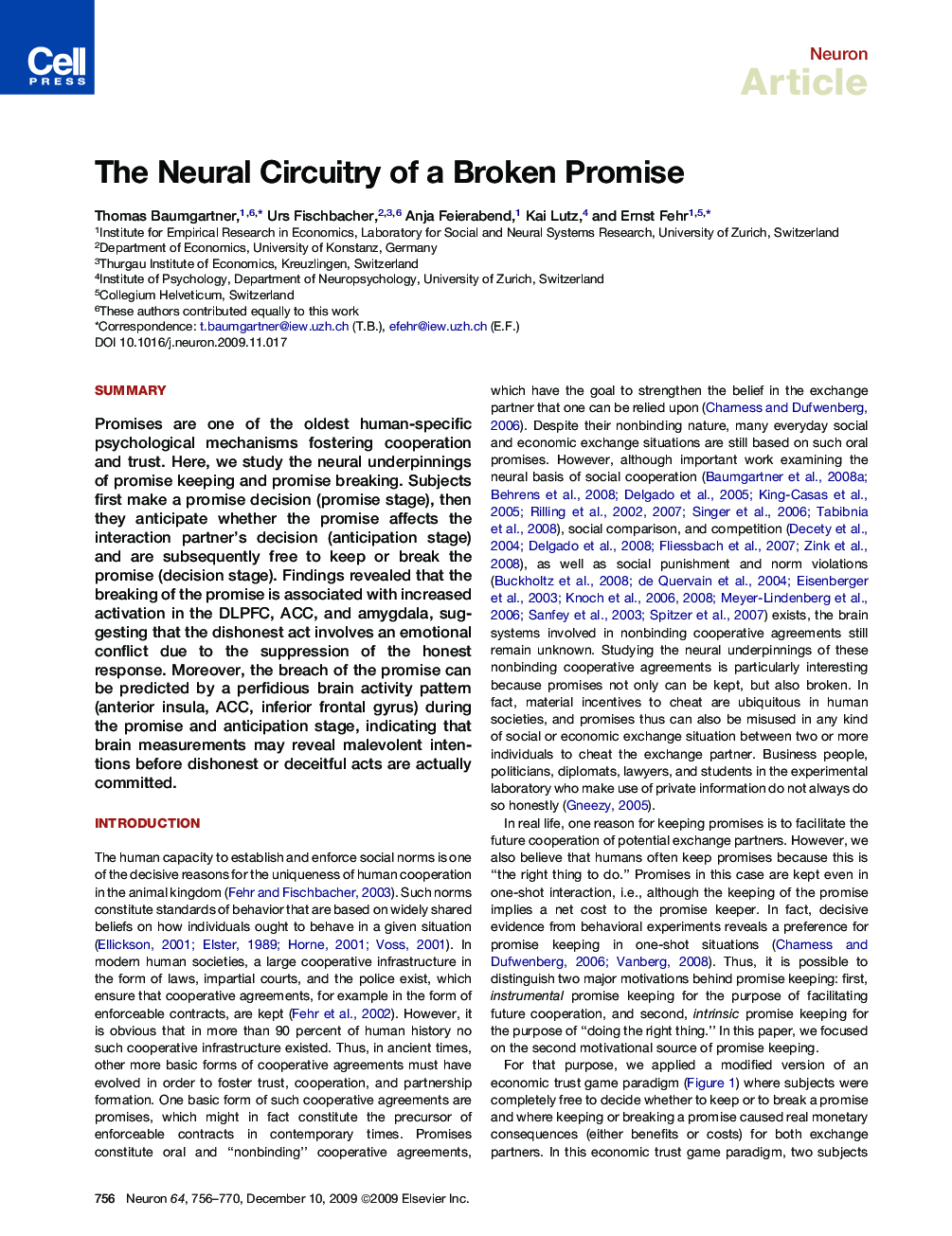| Article ID | Journal | Published Year | Pages | File Type |
|---|---|---|---|---|
| 4321709 | Neuron | 2009 | 15 Pages |
SummaryPromises are one of the oldest human-specific psychological mechanisms fostering cooperation and trust. Here, we study the neural underpinnings of promise keeping and promise breaking. Subjects first make a promise decision (promise stage), then they anticipate whether the promise affects the interaction partner's decision (anticipation stage) and are subsequently free to keep or break the promise (decision stage). Findings revealed that the breaking of the promise is associated with increased activation in the DLPFC, ACC, and amygdala, suggesting that the dishonest act involves an emotional conflict due to the suppression of the honest response. Moreover, the breach of the promise can be predicted by a perfidious brain activity pattern (anterior insula, ACC, inferior frontal gyrus) during the promise and anticipation stage, indicating that brain measurements may reveal malevolent intentions before dishonest or deceitful acts are actually committed.
